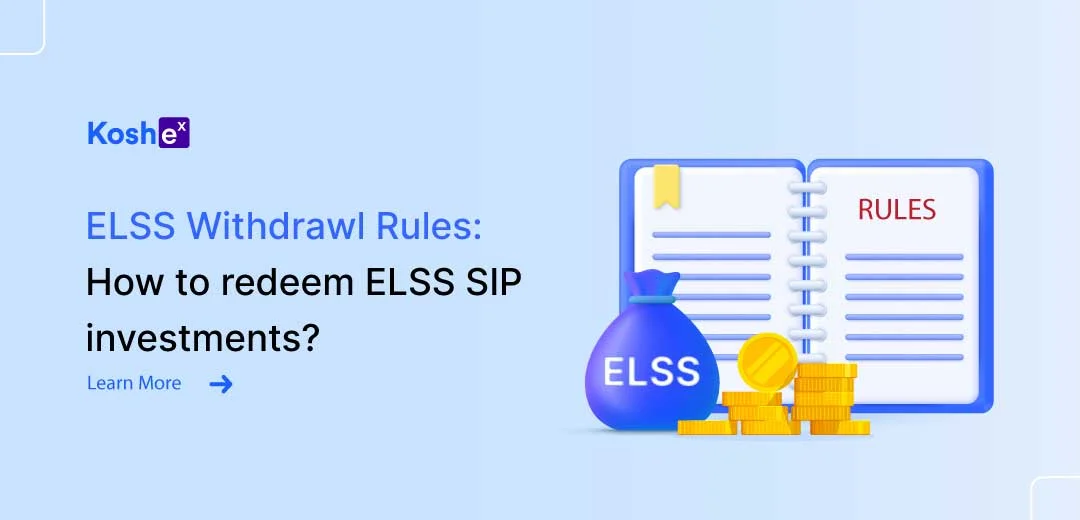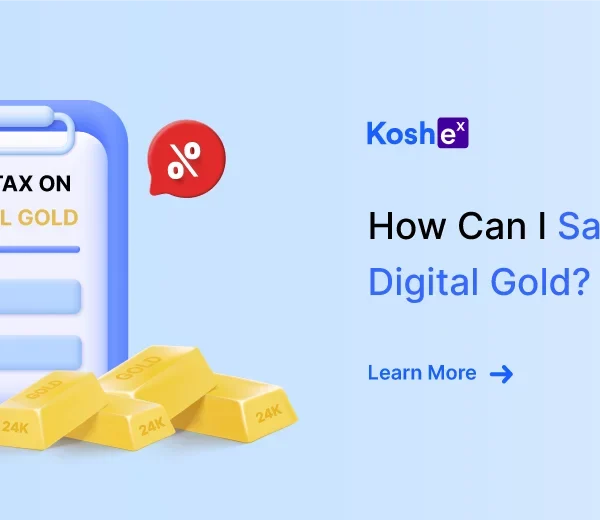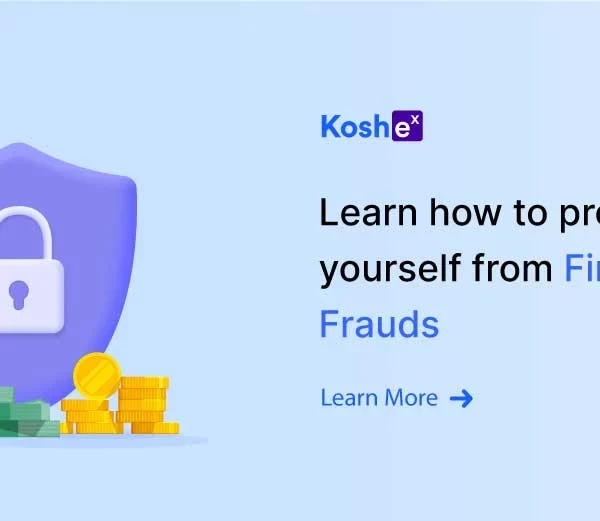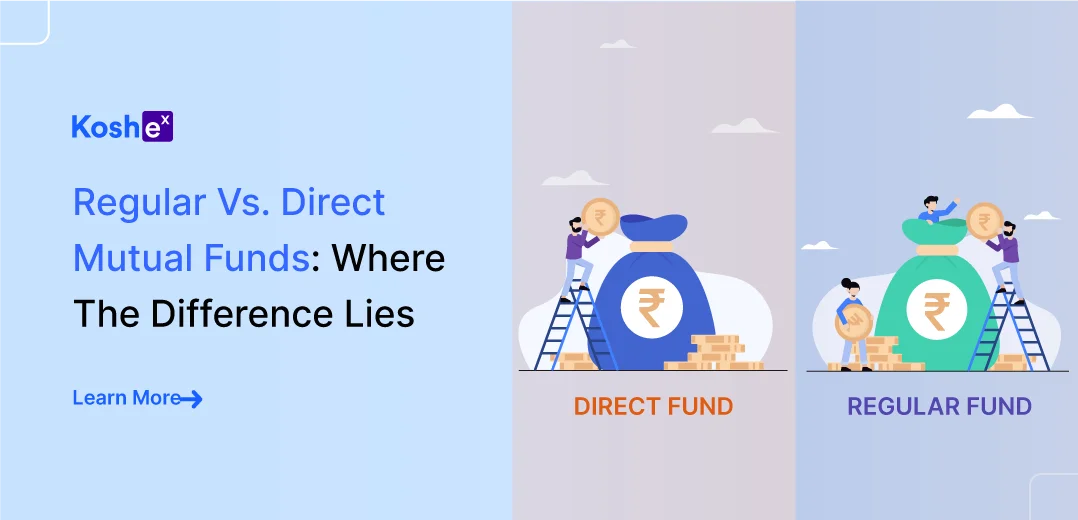Under Section 80C of the Income Tax Act, equity-linked savings schemes (ELSS), also known as tax-saving mutual funds, offer tax deduction benefits to investors. It has the shortest lock-in period of any investment option under Section 80C. However, what happens after the lock-in period has expired? Can an individual redeem ELSS SIP investments in full? Sign up with Koshex and find out.
Here’s a detailed guide on how one can redeem ELSS SIP investments.
What is the lock-in period of ELSS funds?
ELSS funds have a three-year lock-in period. During the lock-in period, investors cannot redeem or sell their mutual fund units. The ELSS is the only 80C investment option with a short lock-in period.
Is it possible to redeem ELSS investments?
There are two ways to invest in an ELSS fund—through SIP and lumpsum. Individuals’ investment redemption process differs based on how they invest. ELSS lumpsum investments are redeemed using the following method:
Redeeming ELSS lumpsum investment
ELSS lock-in periods are calculated from the date of purchase if one makes a lumpsum investment. Therefore, ELSS funds can only be sold after three years of investment.
Here’s an example:
Suppose an individual invested Rs.75,000 in an ELSS scheme on 10th January 2023. When the lock-in period ends on 11th January 2025, they will be able to redeem all their ELSS units in one go.
ELSS lumpsum investments can be redeemed in two ways—online or offline.
A redemption request can be raised online through a mutual fund website. If one has invested through an app, one might be able to redeem their funds through that same app. A redemption request can be raised at a local mutual fund branch by filling out a form. On the fund house’s website, one can find details about the nearest branch.
In SIPs, however, every installment is considered a separate investment, making redemption a bit more complicated.
Redeeming ELSS SIP investments
Regularly purchasing ELSS fund units through the systematic investment plan (SIP) route allows individuals to invest small amounts. In this way, one can select the amount and the frequency at which one wants to invest in the fund.
SIP installments are treated as new investments, so each installment is locked in for three years.
For example, if one had started their monthly SIP of Rs. 20,000 in DSP Tax Saver Fund – Direct Plan-Growth on 1st January 2022. They can redeem their investment on 2nd January 2025. In the same way, investments made on 1st February 2022 will be redeemable on 2nd February 2025.
A redemption request can be raised by visiting the local mutual fund branch or filling out an online redemption form.
If an individual has invested through an app, they can withdraw funds using the same app.
Are ELSS redemptions tax-free?
Everyone needs to know that ELSS investments can help save on taxes, even though the redemption proceeds are not tax-free.
- Long-term capital gains exceeding Rs.1 lakh per year are not taxable. The rate of tax on profits above this limit is 10% plus surcharges and cess.
- A payout from the ELSS fund, known as an IDCW (Income Distribution or Capital Withdrawal), will be added to the individual’s taxable income and taxed accordingly.
Before investing in ELSS funds, what should one consider?
ELSS funds should be chosen with the following considerations in mind:
- Exposure to equity: The equity exposure in ELSS funds is high so that Individuals can earn larger profits this way. As a result, rash decisions should be avoided when selling.
- Lock-in period: Funds in the ELSS category must be locked for three years. There is no point in exiting the investment quickly. A minimum lock-in period of three years must also be observed by ELSS SIP investments, which must be treated as separate investments.
- Risk factor: The ELSS mutual funds are unpredictable and do not provide guaranteed returns, as do other traditional investment options. It may be a good option to invest in ELSS SIPs if individuals are comfortable with moderate risk.
Parameters to look for in ELSS tools
To determine if an ELSS is performing well, individuals need to examine parameters such as past returns, expense ratios, and financial ratios. Looking at the fund’s performance over the past five years might be an excellent place to begin.
The hallmarks of a good fund are consistent returns and stable performance. In addition, the fund’s performance will be apparent if they look at how well it did during subdued markets.
Market turbulence is unlikely to affect an investment fund with high performance. For a fund’s expense ratio to be justified, its returns must be supported.
Increased expense ratios indicate frequent changes to the fund’s constitution, which is a negative indicator. Aside from these, it’s important to pay attention to Alpha, Beta, and Sharpe ratios.
ELSS is a helpful investment option
ELSS offers a higher return potential than other forms of investment under the section since it is equity-linked. Returns will be higher if individuals stay invested for a longer period of time. You can also save up to Rs. 1.5 lakh from taxes with ELSS.
With ELSS, one can choose an investment portfolio that includes large-caps, mid-caps, small-caps, and many more.
A qualified and trained fund manager manages the ELSS investment portfolios to protect investors’ funds and ensure high returns. Visit the Koshex website to learn more about ELSS Funds.
FAQs
Once the ELSS lock-in period has expired, is it necessary to redeem ELSS funds units?
Once the lock-in period has ended, people are not required to redeem their ELSS units. It is up to an individual whether they want to redeem the fund or remain invested in it based on its performance.
Will ELSS be forfeited if one doesn’t redeem it within the lock-in period?
No. Upon expiration of the lock-in period, the fund becomes an open-ended equity scheme that can be redeemed at any time.
What are the tax benefits of redeeming an ELSS after lock-in and investing the proceeds in a different ELSS?
The fund’s performance, the investor’s goals, and requirements should be considered. The units should only be redeemed when one is not satisfied. Taxes (if applicable) and exit loads (if applicable) must also be considered.









Leave a Comment